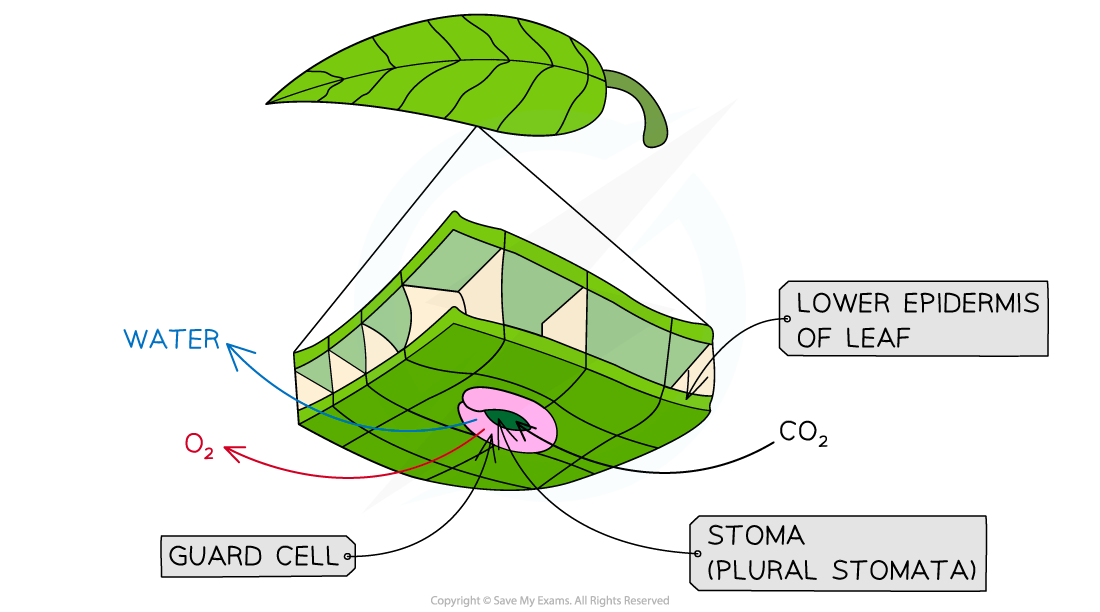- 翰林提供学术活动、国际课程、科研项目一站式留学背景提升服务!
- 400 888 0080
IB DP Biology: HL复习笔记9.1.1 Transpiration in Plants
Transpiration & Gas Exchange
- The majority of photosynthesis takes place in the leaves of plants
- Some plants are able to carry out photosynthesis in the cells of their stems
- During photosynthesis, carbon dioxide is taken in by the leaf and oxygen is released
- The pores in the epidermis of the leaf through which this gas exchange takes place are known as stomata (singular stoma)
- The stomata need to be open all the time in order for gas exchange, and therefore photosynthesis, to continue
- The problem for plants is that as the stomata open to allow gas exchange to occur, water in the form of water vapour is also lost through the stomata
- This water loss is known as transpiration
- Most plants can use cells called guard cells to close their stomata in order to reduce water loss, but this will also reduce gas exchange and therefore their rate of photosynthesis
- Transpiration is the inevitable consequence of gas exchange in the leaf
- There are some advantages to the process of transpiration
- It provides a means of cooling the plant via evaporation
- The transpiration stream is helpful in the uptake of mineral ions
- The turgor pressure of the cells, due to the presence of water as it moves up the plant, provides support to the leaves and to the stems of non-woody plants
- Leaves with high turgor pressure do not wilt and therefore have an increased surface area for photosynthesis

The loss of water vapour from leaves by evaporation through the stomata is unavoidable as gas exchange for photosynthesis can only occur when the stomata are open
转载自savemyexams

最新发布
© 2026. All Rights Reserved. 沪ICP备2023009024号-1









